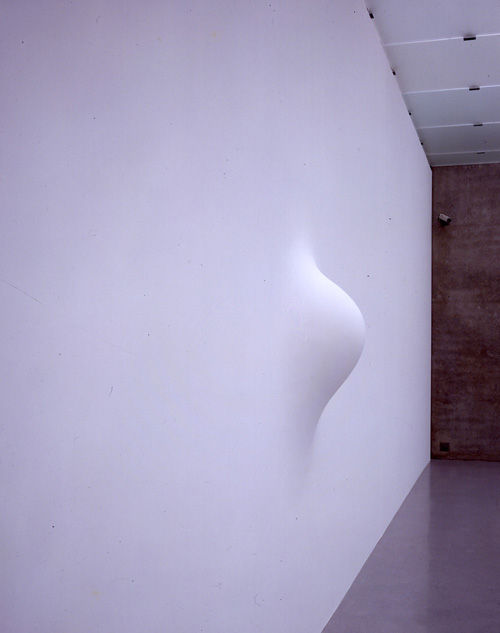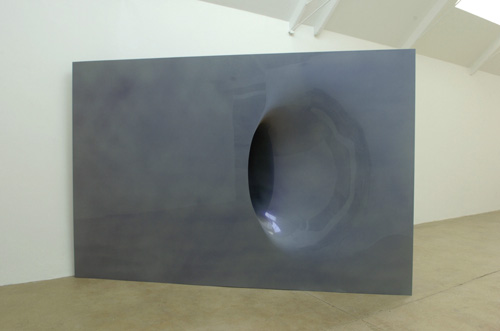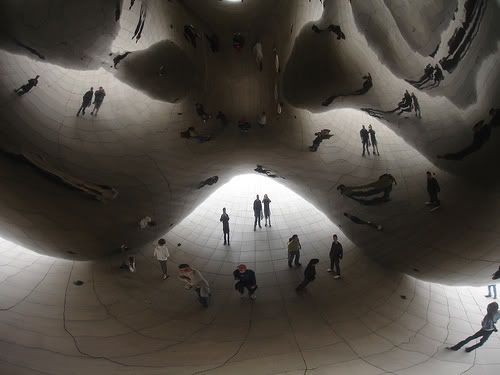Case StudyForeign
Office
Architects
Yokohama
International
Port Terminal
Yokohama,
Japan
Client: The City of Yokohama Port & Harbour
Bureau Construction Department, Osanbashi
Passenger Vessel Terminal Maintenance Subdivision
Gross external floor area: 438,243 m2
Competition First Prize: 1995
Consruction start: 2000
Completed: 2002
 Site Plan
Site Plan First Floor Plan
First Floor Plan Second Floor Plan
Second Floor Plan Sections
Sections The brief of the Yokohama International Port Terminal asked for the articulation of a passenger cruise terminal and a mix of civic facilities for the use of citizens in one building. The site had a pivotal role along the city's water front that, if declared a public space, would present Yokohama City with a continuous structure of open public spaces along the waterfront.
The brief of the Yokohama International Port Terminal asked for the articulation of a passenger cruise terminal and a mix of civic facilities for the use of citizens in one building. The site had a pivotal role along the city's water front that, if declared a public space, would present Yokohama City with a continuous structure of open public spaces along the waterfront.
"Our proposal for the project start by declaring the site as an open public space and proposes to have the roof of the building as an open plaza, continuous with the surface of Yamashita Park as well as Akaranega Park.
The project is then generated from a circulation diagram that aspires to eliminate the linear structure characteristic of piers, and the directionality of the circulation." FOA
 The project starts with what the architects have named as the "no-return pier", with the ambition to structure the precinct of the pier as a fluid, uninterrupted and multi-directional space, rather than a gateway to flows of fixed orientation. A series of programmatically specific interlocking circulation loops allow the architects to subvert the traditional linear and branching structure characteristic of the building. Rather than developing the building as an object or figure on the pier, the project is produced as an extension of the urban ground, constructed as a systematic transformation of the lines of the circulation diagram into a folded and bifurcated surface. These folds produce covered surfaces where the different parts of the program can be hosted.
The project starts with what the architects have named as the "no-return pier", with the ambition to structure the precinct of the pier as a fluid, uninterrupted and multi-directional space, rather than a gateway to flows of fixed orientation. A series of programmatically specific interlocking circulation loops allow the architects to subvert the traditional linear and branching structure characteristic of the building. Rather than developing the building as an object or figure on the pier, the project is produced as an extension of the urban ground, constructed as a systematic transformation of the lines of the circulation diagram into a folded and bifurcated surface. These folds produce covered surfaces where the different parts of the program can be hosted.
 The relation between the skin and the areas established by the structural folds of the surface is one of the most important arguments of the project in that the folded ground distributes the loads through the surfaces themselves, moving them diagonally to the ground. This structure is also especially adequate in coping with the lateral forces generated by seismic movements that affect the Japanese topography.
The relation between the skin and the areas established by the structural folds of the surface is one of the most important arguments of the project in that the folded ground distributes the loads through the surfaces themselves, moving them diagonally to the ground. This structure is also especially adequate in coping with the lateral forces generated by seismic movements that affect the Japanese topography.

 The articulation of the circulation system with the constructive system through this folded organisation produced two distinct spatial qualities; the continuity of the exterior and the interior spaces and the continuity between the different levels of the building.
The articulation of the circulation system with the constructive system through this folded organisation produced two distinct spatial qualities; the continuity of the exterior and the interior spaces and the continuity between the different levels of the building.
 The architects have used a very reduced palette of materials and details in order to explore further the continuity produced by the topography. Single finishes extend on the upper or lower side of the topography regardless of exterior or interior condition.
The architects have used a very reduced palette of materials and details in order to explore further the continuity produced by the topography. Single finishes extend on the upper or lower side of the topography regardless of exterior or interior condition.

 All secondary system that are applied to the steel topography, mainly wood-deck flooring system, glazing system and fencing/handrail system use a single detail along the length of the building and only vary to explore the geometrical variation across spaces. The ambition was to construct continuous but differentiated spaces along the length of the pier.
All secondary system that are applied to the steel topography, mainly wood-deck flooring system, glazing system and fencing/handrail system use a single detail along the length of the building and only vary to explore the geometrical variation across spaces. The ambition was to construct continuous but differentiated spaces along the length of the pier.










 Site Plan
Site Plan First Floor Plan
First Floor Plan Second Floor Plan
Second Floor Plan Sections
Sections


 The project starts with what the architects have named as the "no-return pier", with the ambition to structure the precinct of the pier as a fluid, uninterrupted and multi-directional space, rather than a gateway to flows of fixed orientation. A series of programmatically specific interlocking circulation loops allow the architects to subvert the traditional linear and branching structure characteristic of the building. Rather than developing the building as an object or figure on the pier, the project is produced as an extension of the urban ground, constructed as a systematic transformation of the lines of the circulation diagram into a folded and bifurcated surface. These folds produce covered surfaces where the different parts of the program can be hosted.
The project starts with what the architects have named as the "no-return pier", with the ambition to structure the precinct of the pier as a fluid, uninterrupted and multi-directional space, rather than a gateway to flows of fixed orientation. A series of programmatically specific interlocking circulation loops allow the architects to subvert the traditional linear and branching structure characteristic of the building. Rather than developing the building as an object or figure on the pier, the project is produced as an extension of the urban ground, constructed as a systematic transformation of the lines of the circulation diagram into a folded and bifurcated surface. These folds produce covered surfaces where the different parts of the program can be hosted.






 All secondary system that are applied to the steel topography, mainly wood-deck flooring system, glazing system and fencing/handrail system use a single detail along the length of the building and only vary to explore the geometrical variation across spaces. The ambition was to construct continuous but differentiated spaces along the length of the pier.
All secondary system that are applied to the steel topography, mainly wood-deck flooring system, glazing system and fencing/handrail system use a single detail along the length of the building and only vary to explore the geometrical variation across spaces. The ambition was to construct continuous but differentiated spaces along the length of the pier.